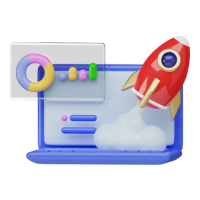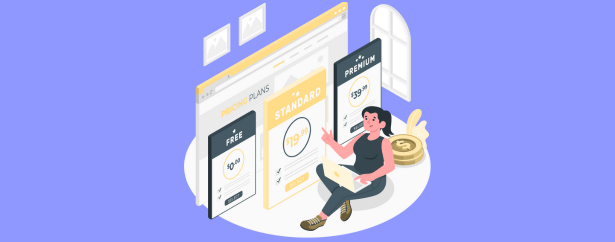Managing product data is a time taking task for any eCommerce company looking to stay competitive, as the massive volume of data can be overwhelming. However, with the development of product information management (PIM) solutions, managing product data is no longer a manual process.
These digital solutions can automate data-related processes, from collection and enrichment to distribution across multiple sales channels, making the process faster, more secure, and up-to-date.
Even though the PIM solution benefits managing product data, a PIM cost is involved. The question arises: How much should one expect to pay for an average PIM solution?
In this blog, we will discuss the cost of implementing a PIM in e-commerce. We will explore the PIM cost types and the main factors that can impact the cost. The main goal is to help you make an informed decision when selecting a PIM for your eCommerce business.
What is PIM software?
PIM software or PIM solution is a centralized platform that enables vendors and retailers to collect, manage, enrich, and distribute their product data to various eCommerce and sales channels.
Through enhanced product information, PIM enables e-commerce businesses to provide customers with exceptional e-commerce experiences.
Other software similar to PIM
There are many other software types that are related to the PIM or go hand in hand with it. Sometimes, all these software can be combined in a suite of tools. And often, they can be used separately or integrated with others for efficient management.
Some of the software related to PIM are;
1. Digital Asset Management (DAM)
Digital Asset Management, abbreviated as DAM, is a software solution for storing and managing digital content in a central location. Most importantly, DAM boosts campaign productivity while maintaining brand integrity.
2. Enterprise Resource Planning (ERP)
An ERP system works as centralized storage and management of a company, receiving information from all departments, automating data management processes, and obtaining and analyzing reports.
3. Product Experience Management (PXM)
PXM software is closely related to PIM software, but PXM software focuses more on the product’s user experience through the whole user trip. It’s meant to help guests find exactly what they need, no matter which deals or ecommerce platforms they interact with.
Types of PIM cost
Product information management tools can have different costs and depend on multiple factors.
There are two types of PIM costs: one-time costs and ongoing costs. Some do not apply to large, medium, or small businesses. Some costs are only relevant to businesses of a certain size.
1. One Time Cost
One-time costs are typically associated with the initial implementation of the PIM solution and can include customization, integration, data migration, and setup costs.
These costs can vary widely depending on the complexity of the implementation, the number of users, and the size of the business. Generally, one-time costs are higher for larger businesses or those with complex data structures.
One-time costs are subdivided into many other types. Some of them are;
- Customization and implementation costs
- Analysis cost
- Setup cost
- Integrations and connectors cost
- Onboarding cost
I. Customization and implementation cost
When implementing a system solution for a customer, additional costs may be associated with delivering customized configurations and functionality to meet the customer’s requirements.
This could involve migrating data, configuring the data model, developing new functionality, or mapping data fields. These costs should be considered when estimating the total cost of delivering a customized solution to the customer.
II. Analysis cost
The costs related to this are related to needs assessment, identifying problems, analyzing business processes, and gathering requirements.
These costs can be conducted through either your own research or by hiring a consulting/provider company to conduct workshops.
III. Setup cost
These costs are related to project initialization and are an important consideration for project managers and can include components such as project setup, onboarding, database and data storage setup, tenant setup, and customization.
These costs may be included in licensing fees or charged separately depending on the software provider.
IV. Integration and connectors cost
Integrating third-party systems, input/output sources, content providers, and sales channels can involve significant efforts and costs, which can vary depending on several factors, including the number of data sources, systems, and channels to be integrated, as well as the uniformity of data sources.
The costs of integrating these systems and channels can include development, maintenance, licensing, data mapping, and testing costs.
V. Onboarding cost
These costs are associated with employee training and onboarding. These can vary widely depending on various factors, including the level of expertise required for the position, the size of the company, and the specific training methods used.
Some of the potential costs to consider include trainer or instructor costs, materials and resources, employee time, travel and accommodation, technology and infrastructure, and administrative costs.
Get a good return on your investment with Apimio
Sign up now and find out how much you can save on PIM costs by switching to Apimio PIM
2. Ongoing Costs
These costs are the recurring expenses associated with maintaining and using the solution on an ongoing basis after the initial implementation.
These costs can include maintenance, upgrades, hosting, support, and other fees. The level of ongoing costs can vary depending on the vendor, the level of support provided, and the business’s specific requirements.
Ongoing costs are further subdivided into these types;
- Support costs
- License costs
- Run costs
I. Support cost
These costs are typically included in the license fee and can include technical support, training, and consulting services.
The level of support the vendor provides can vary, and it’s important to carefully evaluate the level of support and associated costs to ensure that the investment aligns with the business’s requirements and budget.
II. License cost
A PIM system license cost usually covers access to the software modules you intend to use, ongoing automatic updates, expenses related to cloud hosting, a Service-level Agreement (SLA), and an assigned Customer Success Manager.
Several factors determine the cost of a PIM system license, such as;
- Number of SKUs,
- Number of categories and attributes per SKU
- The commitment period
- The modules in use
- Level of solution customization
- Number of supported languages
III. Run cost
Run costs refer to the ongoing expenses associated with running and maintaining a system or application, and these costs can increase as the number of unique and custom connections increases.
This is because each custom connection may require additional resources to integrate and maintain. Regular monitoring and updates may also be required to ensure they continue functioning properly and securely.
Factors Affecting PIM Cost
Product Information Management( PIM) tools can vary significantly in price, depending on various factors that are unique to each business.
These are some of the factors that can impact the cost of a PIM tool;
- The business domains you operate in
- Type of company
- Number of SKUs
- Content types
- Data input and output
- Functional requirements
1. The business domain you operate in
The industry in which your business operates can impact the cost of a PIM tool. For example, PIM tools designed for retail or e-commerce tend to be more affordable than those designed for manufacturing, healthcare, or finance industries.
2. Type of company
The size and type of your company can also impact the cost of a PIM tool. Small businesses may find that an introductory, entry-level PIM tool is sufficient for their requirements and is more affordable, while larger enterprises with more complex requirements may need a more robust and expensive PIM tool.
3. Number of SKUs
The number of products you have, or SKUs, can also impact the cost of a PIM. A larger number of SKUs may bear a more advanced PIM tool that can handle the volume of data and content, which may come at a high price point.
4. Content types
The type of content you need to manage, such as images, videos, and technical specifications, can also impact the cost of a PIM. PIM tools that are designed to manage a wide range of content types are more expensive than those that focus on managing just a few types of content.
5. Data input and output
The number of input and output sources, such as ERP systems, e-commerce platforms, and marketplaces, can also impact the cost of a PIM. A PIM that needs to integrate with multiple data sources may require further development work and customization, leading to higher costs.
6. Functional Requirements
The specific features and functionalities you need in a PIM tool can also impact the cost. For example, a PIM tool with advanced data analytics and reporting capabilities will generally be more expensive than one that just offers basic data management and import/ export features.
Stages of PIM Cost Estimation
Different PIM providers can have different approaches to cost estimation based on their business models, target markets, and the features they offer.
Here we have listed some common stages of PIM cost estimation;
Stage I – Initial
An initial project estimate is typically a rough, high-level cost indication provided by a vendor or service provider to a client during the initial stages of a project.
This estimate is based on the high-level requirements discussed and is aimed to give the client an idea of the approximate cost and timeline for the project.
Stage II – Intermediate
In this phase, the companies engage in multiple calls to gather in-depth requirements and answer any open questions. Based on this information, the team creates a more precise estimate considering all necessary elements.
To optimize outcomes and meet expectations, medium and large-scale projects may benefit from a workshop that clarifies the project vision and requirements before proceeding to the implementation phase.
Stage III – Final
In the last stage of estimation, the final stage, if required, the team changes the project scope and cost to maintain a balance between price and its value.
The PIM software company aims to provide a solution that is within the budget and helps in achieving the desired goals.
Factors causing an increase in PIM cost
Product information management solutions can become more expensive due to various factors.
Here we have listed some of the factors that cause an increase in pim cost;
- Market Share and Brand Recognition
- Increased Demand
- Advancements in Platform Functionality
- Rising Cost of Third-Party Services
1. Market Share and Brand Recognition
Companies with higher market share and strong brand recognition can command higher prices, have a competitive advantage, and build customer loyalty.
While brand promotion can be budget-intensive, investing in it can lead to increased sales, pricing power, and customer loyalty over time.
2. Increased demand
In the digitalized eCommerce market, the need to become omnipresent is one of the main reasons for the cost increase.
The COVID-19 pandemic made it clear that businesses that want to survive need to go online, which led to an increased need for managing, enriching, and delivering huge amounts of product content, making PIM solutions more in demand.
Interested in learning how our PIM system is different from others?
Take a closer look at our product in a demo and make the right choice for your business.

3. Advancements in Platform Functionality
As eCommerce platforms become more complex and functional, PIM solutions need to evolve to cope with the changing needs of businesses, which can result in more development and research costs for PIM solution providers. And it ultimately leads to higher prices for the software.
4. Rising Cost of Third-Party Services
The cost of third-party services is a major factor affecting PIM solutions’ cost. Many businesses rely on third-party services like data storage and the cloud to host their product data and content. If the cost of these services increases, it’s obvious that the cost of PIM solutions will also rise.
Hidden costs of PIM
Hidden costs of product information management (PIM) software can arise when you are purchasing a package version. Although many PIM providers are now clear about pricing, there is still a risk of being charged for extras.
Additional expenses may be associated with the following;
- Integration or connector fees
- Customization or workflows
- Complex configuration
- Add-on features
While the PIM comparison provided by most vendors can give a high-level overview of the advantages and disadvantages of different packages, it is often necessary to delve deeper into the specifics of each package to fully understand the potential costs involved.
Consider the potential cost of add-on features that may only be available for an extra fee. While some vendors may offer an all-inclusive package that includes all features, others may require you to pay extra for certain functionality.
This can make it difficult to compare different packages accurately and may lead to unexpected expenses down the line.
When implementing a PIM software package, the key to avoiding hidden costs is thoroughly analyzing your organization’s needs and requirements.
This includes understanding what features and functionality are necessary and what potential integration and customization costs may be associated with different packages.
Final Thoughts
Getting the most out of your data is a challenge for any business, especially when it’s in a highly digitized environment. There are many factors to consider when choosing a PIM solution, such as its features and price.
One of the most important factors you should consider when choosing a PIM solution is setting clear expectations.
With the help of Apimio PIM, you can easily automate various tasks related to data management.
You have the ideal solution for any product information issues when you add digital shelf monitoringWhat is Digital Shelf Monitoring? Digital shelf monitoring involves the systematic tracking of different categories of product information across various channels to ensure that it is... More, data standardization, and seamless content distribution to various sales channels. Let our experts take care of the rest while you concentrate on your creative and strategic tasks.
What to do next?
- Read more about our Product Information-related Guides here.
- Create an account now and enjoy a 14-days free trial. Sign-up here.
- Contact our support if you have any questions or issues.
Frequently Asked Questions
The cost of a PIM system varies based on multiple factors such as business size and complexity, number of products and SKUs, level of customization needed, and level of support and training required.
Yes, the PIM system can be integrated with other business systems, such as e-commerce platforms, CRM systems, and ERP systems, but it may require additional setup and customization.



